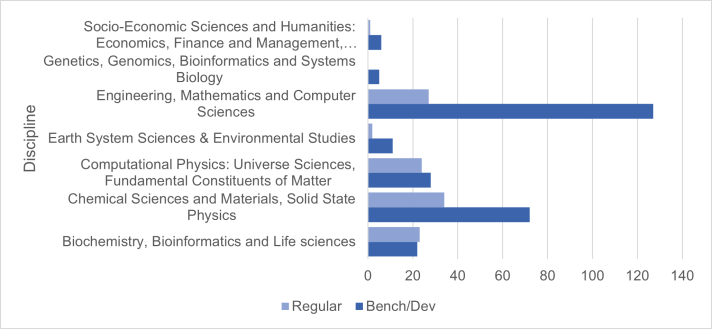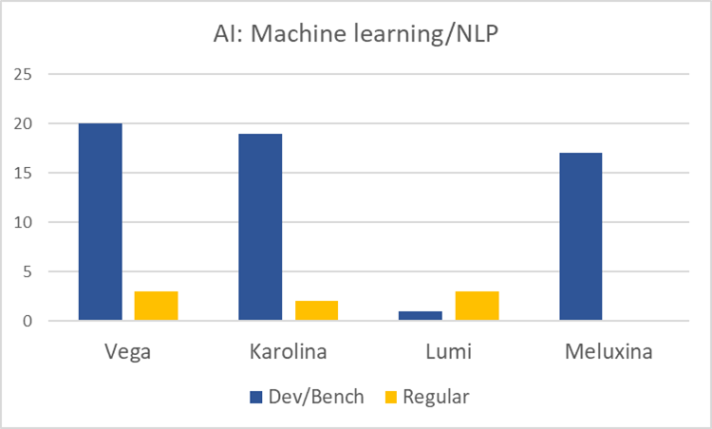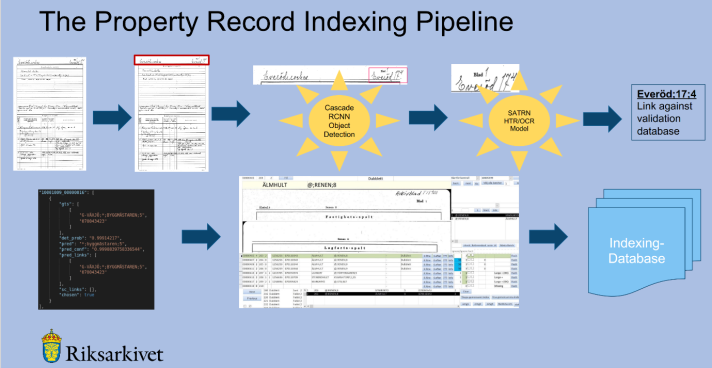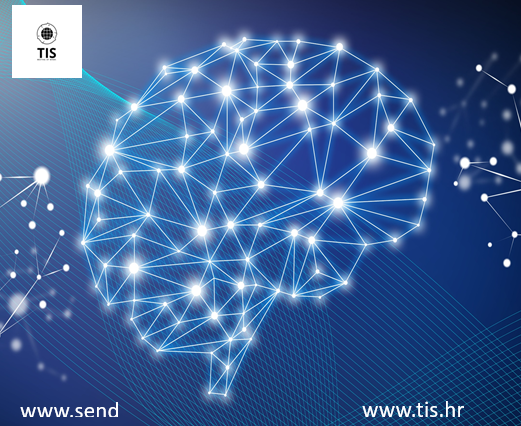In April 2021, the first EuroHPC Joint Undertaking (EuroHPC JU) system called Vega in Slovenia came online and became available for scientists from academia, industry (especially to small and medium size enterprises (SMEs)) and public administration. Shortly after Vega followed Karolina in Czech Republic, MeluXina in Luxembourg, Discoverer in Bulgaria and LUMI in Finland. The last two were operational starting from January 2022. (The list of systems and their specification can be found at: https://eurohpc-ju.europa.eu/about/our-supercomputers_en)
Since the first days of the systems being operational, the EuroHPC JU access calls were open for anyone from H2020 member and associated countries to apply and get access to the resources. EuroHPC JU provides different flavours of access for diverse needs:
Applicants can request a small number of core hours to get acquainted with the supercomputers, or test or benchmark their software. This type is called Benchmark type of access and can provide up to 7000 CPU node hours and/or up to 3000 GPU node hours.
If the applicants are already experienced with supercomputers, they can apply for Development type of access and further develop their software, whether it is software from the traditional disciplines or a machine learning training, or whether it is a manufacturing development process software from a company or a database training of an administrative governmental agency. This type of access grants up to 15 000 CPU node hours and/or 10000 GPU hours.
Finally, if the applicant is aware of his/her needs and well experienced then he/she can apply to one of the two large allocations possibilities, either Regular type of access or Extreme type of access (the last open since November 2022). Through the Regular type of access, the maximum available CPU node hours are about 800000 and GPU node hours are about 700000 per cut-off. The Extreme type of access provides resources for about to 4 million CPU node hours and about 8 million GPU node hours per cut-off. The duration of the projects can vary between one to two years.
These two calls provide access to significant supercomputer resources, however for the applications to be accepted for these types of access they need to submit to a peer review, whereas access to computing resources under the Benchmark and Development types of access calls can be granted to applicants within two weeks due to the circumference of the peer review processes.
From April 2021 until December 2022 there have been 394 access applications submitted to EuroHPC JU from all over Europe including H2020 associated countries. Of these about 11% were from the private sector and the public administration coming from Sweden, Spain, Slovenia, Turkey, Italy, France, Finland, Croatia, and Belgium.
Below we show the figure listing the number of applications per country for Benchmark, Development and Regular types of calls (the statistics for extreme call are not available as the call only recently open).
As we can see up until now most applications came in from Italy and Sweden. However, we see a constant increasing demand from other countries as well.
We also gathered statistics on the number of applications per discipline/sector:
Although most applications came from traditional disciplines, many of these had a second part of the project where AI/machine learning methods were implemented, and the need of GPUs was constantly predominating. We also noticed few applications from non-traditional disciplines such as linguistics or other social and economic sciences. These are few and do not represent a dedicated listing but the trend of increasing interest even in these disciplines is notable.
Outside of the applications shown above, we received 65 out of 383 applications purely for AI: machine learning or natural language processing projects especially from SMEs and the public administration.
The figure below shows the distribution of these projects per EuroHPC JU system:
As the GPU partition of the LUMI system only became operational at the end of 2022, the number of applications is also the lowest. However, the overall analyses of the applications clearly indicate high demand of GPU accelerators in almost all disciplines and industrial sectors.
It also became obvious that the needs and demands of our users are increasingly inhomogeneous in both resource needs as well as usage behaviour with the clear uptake of AI, new disciplines, and sectors as well as increasing number SME as users. Thus, we intend in the near future to adjust and adopt an updated user EuroHPC JU policy to better accommodate the user demands.
We would also like to highlight some projects that have been successfully utilising the EuroHPC JU supercomputers and produced excellent results:
The Swedish National Archives has about 80 000 shelf meters of archival material, ranging from the 11th century until the present. Their digital archives consist of about 215 million scanned images of archival documents. Just scanning the documents does not make them searchable. For running-text documents HTR/OCR is needed for a full-text search, and for forms and tables, segmentation and HTR/OCR is needed to transform the scanned forms into searchable databases to be used by them internally, or for research.
The Swedish National Archives applied for Development access to the Vega EuroHPC JU system hosted by the Institute of Information Science (IZUM)in Slovenia and with the 384 000 GPU core hours granted to them, they have trained their SATRN model on Vega, enabling them to increase the scale of the resized images going into the model, thereby improving accuracy for handwritten text, which requires more information than printed text. At a hit-rate of 90% this project saved them about 700 000 Euros in manual labour costs, and the indexing database was created in a far more time-efficient manner than would have been possible without access to supercomputing resources.
For an example of an SME producing positive results by utilising EuroHPC resources, a unique AI solution for assessing the quality of spontaneous movements (fidgeting) is being developed on the Vega system by a Croatian SME called TIS (www.tis.hr ). The aim of the project is to detect infants (2-3 months old) at high risk of neurodevelopmental disorders or expected normal outcome in a group of children at risk of developmental disorders.
Another example project is the 3D computational fluid dynamics (CFD) simulation of incompressible flows to understand and explore fluid phenomena at unprecedented level of accuracy. This project is done by researchers at UC Louvain, Belgium on the EuroHPC JU system MeluXina.
It is breathtaking to see the variety and importance of the projects that are being undertaken on EuroHPC JU systems by academia, private sector and the governmental agencies that otherwise would have been not possible to implement without HPC. We are looking forward to accommodating even more exciting research on EuroHPC JU systems in the coming years.
by the EuroHPC JU
Join us at ISC High Performance 2023 in Hamburg for a EuroHPC workshop all about access to EuroHPC resources and the support available to European users. Thursday 25th May, 9:00-13:00.
Details
- Publication date
- 16 May 2023
- Author
- European High-Performance Computing Joint Undertaking





